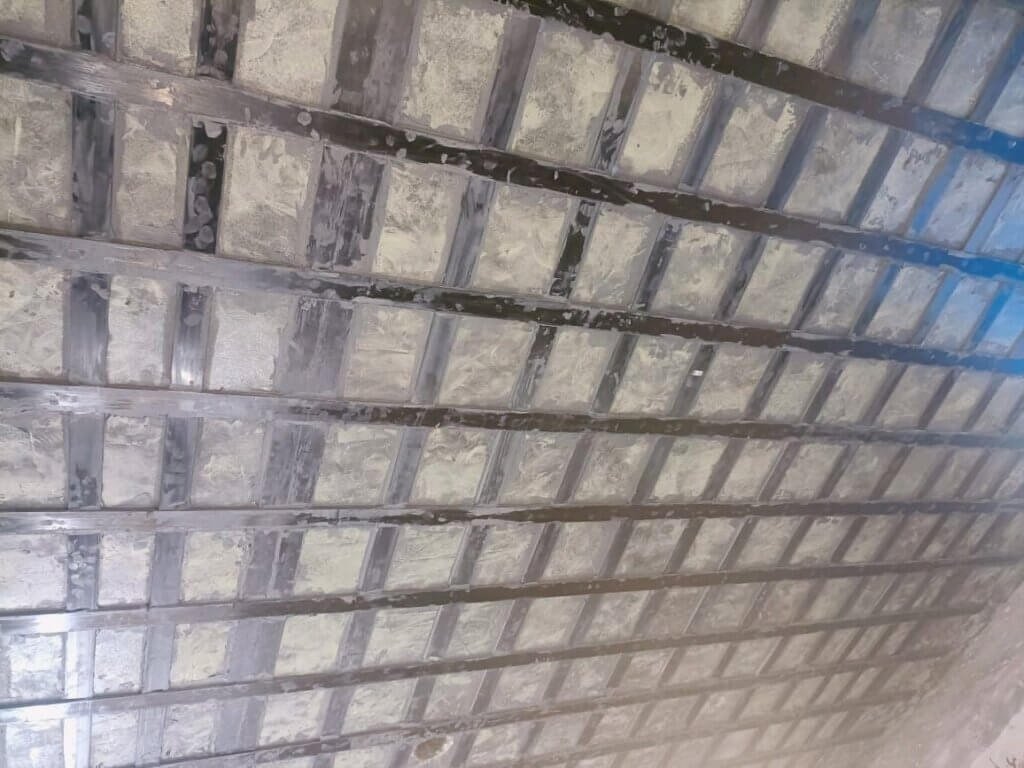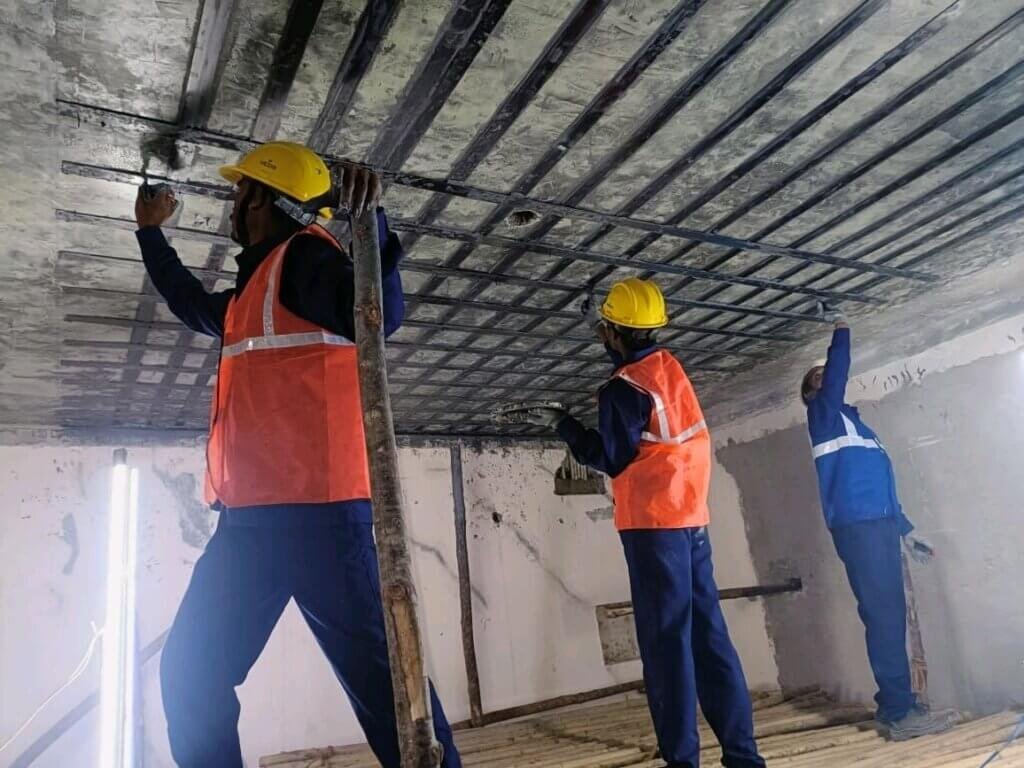Carbon Wrapping for Slabs has become a dependable method for increasing the longevity and load-bearing capability of ageing concrete structures in the constantly changing world of construction and maintenance. This contemporary approach to structural improvement is well known for its effectiveness, long-term outcomes, and low application disturbance.
This article delves into the benefits, process, and practical applications of carbon wrapping—especially for slabs—in both commercial buildings. It also highlights how this technique contributes significantly to the repair and rehabilitation of structures, ensuring safety and functionality for decades to come.

What Is Carbon Wrapping for Slabs?
Applying high-strength carbon fiber-reinforced polymers (CFRP) to pre-existing concrete surfaces is known as “carbon wrapping.” Specialized epoxy resins are used to adhere these carbon textiles to the underside of concrete slabs in slab applications. By serving as an extra layer of tensile reinforcement, the wrapping greatly enhances the slab’s structural performance.
Slabs that are degrading because of age, environmental degradation, and subpar construction techniques, or rising loading demands can be strengthened with great effectiveness using this procedure.
Benefits of Carbon Wrapping for Slabs
Carbon wrapping has many benefits, especially for industrial floors, parking garages, bridges, and structural slabs in structures. Here are a few of the main advantages:
Enhanced Load Capacity
The slab can support heavier loads thanks to carbon covering. When structures are expanded or repurposed and new loads surpass the initial design specifications, it is very helpful.
Lightweight and Non-Invasive
Because the carbon fiber components are so light, the structure does not experience any additional dead load. Carbon wrapping doesn’t require invasive installation techniques or a lot of space, in contrast to steel jacketing.
Superior Corrosion Resistance
Because carbon fibers don’t corrode, they are perfect for locations that are humid, near water, or exposed to chemicals. With this function, the slab’s lifespan is increased without the need for ongoing maintenance.
Fast Installation
Carbon wrapping can be applied more quickly than typical retrofitting techniques. For facilities that need to stay open while undergoing structural upgrades, the procedure produces the least amount of downtime possible. Carbon wrapping can be applied more quickly than typical retrofitting techniques. For facilities that need to stay open while undergoing structural upgrades, the procedure produces the least amount of downtime possible.
Improved Flexural and Shear Strength
The slab’s flexural and shear strengths are increased via carbon wrapping. For constructions that are subject to seismic activity, dynamic loads, or vibration, this improvement is essential.
Step-by-Step Process of Carbon Wrapping
The success of Carbon Wrapping for Slabs depends on the correct application. Below is an overview of the typical installation process:
Step 1: Surface Preparation
To guarantee good adherence, the slab surface is cleaned and roughened. Mechanical blasting or grinding is used to remove any loose concrete, dust, oil, and grease.
Step 2: Concrete Repair
Before wrapping, any damaged concrete is fixed. This guarantees that the substrate is stable and capable of forming a strong bond with CFRP.
Step 3: Primer Application
The concrete surface is primed with an epoxy primer that works well. The link between the carbon fabric and the slab is strengthened by this layer.
Step 4: Adhesive Layer
The carbon fiber cloth is held in place by an epoxy-based saturant or bonding agent.
Step 5: Wrapping the Carbon Fiber
After precise alignment, the carbon fiber sheet is pressed onto the surface. To guarantee a consistent connection, air bubbles are eliminated with rollers.
Step 6: Curing
For a predetermined amount of time, the wrapped region is left to cure. The epoxy must cure in order to reach its maximum strength.
Step 7: Protective Coating
To improve durability and stop moisture or chemical penetration, a final protective coating is frequently applied.
Applications of Carbon Wrapping in Slabs
Numerous industries make extensive use of carbon wrapping. It is appropriate for a variety of structural issues due to its performance and adaptability:
Commercial Buildings
Slabs are frequently subjected to strong dynamic loads and extensive foot traffic in multi-story commercial structures. To increase their flexural strength without altering the architectural arrangement, carbon wrapping is perfect.
Industrial Warehouses
Over time, slabs that support large machinery or equipment may deteriorate. Their ability to handle loads is much increased when CFRP is wrapped around them.
Bridges and Infrastructure
Carbon wrapping is also employed in infrastructure projects where slab durability is crucial. It is an important method for retrofitting and rehabilitation of structures like flyovers and pedestrian bridges.

Role in Structural Rehabilitation
Carbon wrapping is essential in contemporary civil engineering for enhancing the structural integrity of old structures and repairing concrete. Without requiring total demolition or reconstruction, it assists in meeting current load needs and safety norms.
Additionally, carbon wrapping supports environmentally friendly building techniques. It lowers the carbon footprint related to new building materials and procedures by prolonging the life of existing slabs.
Carbon Wrapping and Seismic Retrofitting
Seismic zones are among the crucial regions where carbon wrapping performs exceptionally well. Slabs experience extreme flexural and shear stresses during an earthquake. Additional ductility from carbon wrapping aids in the efficient absorption and redistribution of seismic energy by slabs. Contact us

